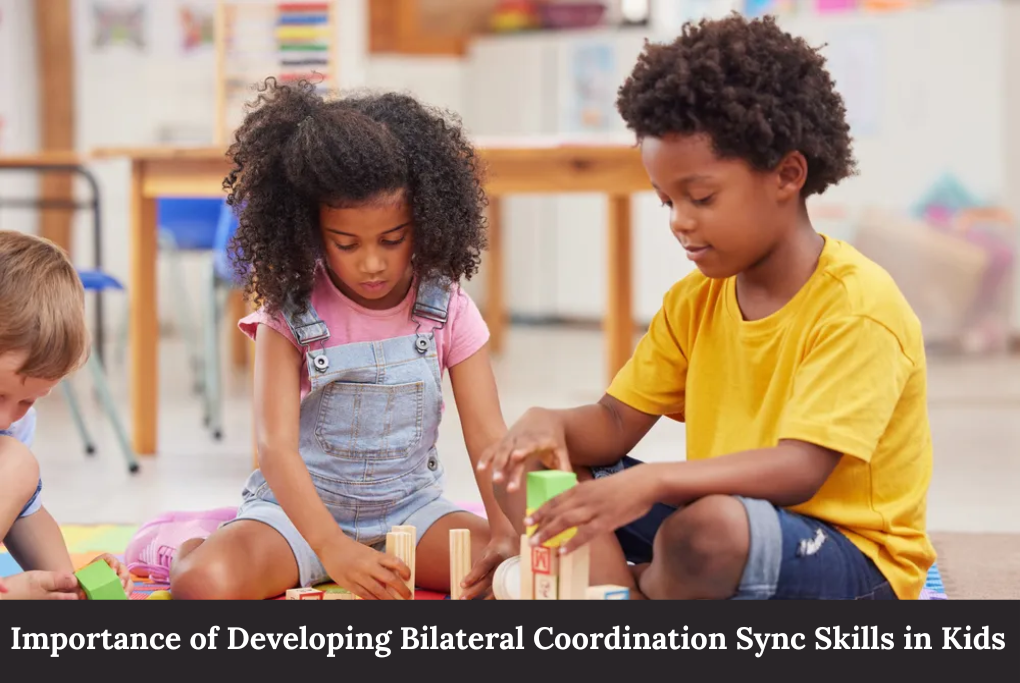As a parent, you want your child to grow into a healthy, confident, and capable individual. One crucial aspect of childhood development is Bilateral Coordination Sync skills, which enable kids to perform tasks that require the coordination of both sides of the body. In this article, we’ll explore the importance of developing Bilateral Coordination Sync skills in kids, the repercussions of not having developed these skills, and provide tips and strategies for parents to improve Bilateral Coordination Sync skills in their children.
What are Bilateral Coordination Sync Skills?
Bilateral Coordination Sync skills refer to the ability to coordinate both sides of the body to perform tasks, such as crawling, walking, running, and manipulating objects. These skills involve the integration of the brain and body, enabling kids to move efficiently, balance, and react to their environment.
Why is it Important to Develop Bilateral Coordination Sync Skills?
Developing Bilateral Coordination Sync skills is crucial for kids’ physical development, academic success, and everyday life. Here are some reasons why:
- Improved Physical Performance: Bilateral Coordination Sync skills enable kids to perform physical tasks with greater ease, efficiency, and accuracy.
- Enhanced Cognitive Development: Bilateral Coordination Sync skills involve cognitive processing, which can help improve kids’ attention, focus, and problem-solving abilities.
- Better Academic Performance: Bilateral Coordination Sync skills are essential for academic success, enabling kids to participate in physical activities, write, and manipulate objects.
- Increased Confidence: Mastering Bilateral Coordination Sync skills can boost kids’ confidence and self-esteem, enabling them to tackle new challenges with greater ease.
Repercussions of Not Having Developed Bilateral Coordination Sync Skills
If kids don’t develop Bilateral Coordination Sync skills, they may face several challenges, including:
Difficulty with Physical Activities: Kids who struggle with Bilateral Coordination Sync skills may find it challenging to participate in physical activities, such as sports or dance.
Poor Handwriting: Bilateral Coordination Sync skills are essential for handwriting, and kids who struggle with these skills may have poor handwriting.
-Difficulty with Balance and Coordination: Kids who struggle with Bilateral Coordination Sync skills may have difficulty with balance and coordination, which can increase the risk of falls and injuries.
Effects of a Lack of Bilateral Coordination Sync Skills in Different Age Groups
The effects of a lack of Bilateral Coordination Sync skills can vary depending on the age group:
2-5 years: Kids in this age group may struggle with basic motor skills, such as crawling, walking, or running.
5-10 years: Kids in this age group may find it challenging to develop more complex motor skills, such as riding a bike or tying shoelaces.
10+ years: Kids in this age group may struggle with advanced motor skills, such as playing sports or musical instruments.
Games, Puzzles, and Activities to Improve Bilateral Coordination Sync Skills
Here are some games, puzzles, and activities that can help improve Bilateral Coordination Sync skills in kids:
Obstacle Courses: Obstacle courses can help kids develop Bilateral Coordination Sync skills, such as crawling, climbing, and balancing.
Ball Games: Ball games, such as catch or throw, can help kids develop hand-eye coordination and Bilateral Coordination Sync skills.
Dance and Movement: Dance and movement activities can help kids develop Bilateral Coordination Sync skills, such as rhythm and timing.
Puzzles and Games: Puzzles and games that require bilateral coordination, such as tying shoelaces or buttoning shirts, can help kids develop these skills.
Strategies to Improve Bilateral Coordination Sync Skills in Children
Here are some strategies to improve Bilateral Coordination Sync skills in kids:
Practice Regularly: Encourage kids to practice Bilateral Coordination Sync skills regularly, using games and activities that promote skill-building.
Make it Fun: Make Bilateral Coordination Sync skill development fun and engaging, using games and activities that kids enjoy.
Provide Opportunities for Practice: Provide opportunities for kids to practice Bilateral Coordination Sync skills, such as playing sports or musical instruments.
Be a Role Model: Be a role model for Bilateral Coordination Sync skill development, engaging in activities with your kid and promoting a healthy, active lifestyle.
Tips for Parents
Here are some tips for parents to help improve Bilateral Coordination Sync skills in their kids:
Encourage Physical Activity: Encourage kids to engage in physical activities, such as sports or dance, which can help develop Bilateral Coordination Sync skills.
Provide Feedback: Provide feedback to kids on their Bilateral Coordination Sync skills, helping them to identify areas for improvement and develop strategies for improvement.
Make it a Family Affair: Make Bilateral Coordination Sync skill development a family affair, engaging in activities with your kid and promoting a healthy, active lifestyle.
Be Patient: Be patient and supportive, recognizing that Bilateral Coordination Sync skill development can take time and practice.
Additional Tips for Parents
Here are some additional tips for parents to help improve Bilateral Coordination Sync skills in their kids:
Use Real-Life Examples: Use real-life examples to help kids develop Bilateral Coordination Sync skills, such as tying shoelaces or buttoning shirts.
Encourage Active Play: Encourage kids to engage in active play, such as running, jumping, and climbing, which can help develop Bilateral Coordination Sync skills.
Provide Opportunities for Exploration: Provide opportunities for kids to explore and learn new things, which can help develop their Bilateral Coordination Sync skills.
Celebrate Successes: Celebrate kids’ successes in developing Bilateral Coordination Sync skills, which can help build their confidence and motivation.
Common Challenges and Sol9utions
Here are some common challenges that parents may face when trying to improve Bilateral Coordination Sync skills in their kids, along with some potential solutions:
Lack of Motivation: Encourage kids to find activities that interest them, and provide positive reinforcement and support.
Limited Access to Resources: Look for free or low-cost resources in your community, such as parks or playgrounds, that can support Bilateral Coordination Sync skill development.
Physical Disabilities: Consult with a healthcare professional or physical therapist to develop a plan that meets your kid’s needs and abilities.
The Importance of Early Intervention
Early intervention is critical for kids who are struggling with Bilateral Coordination Sync skills. Research shows that kids who receive early intervention and support are more likely to develop the skills they need to succeed in school and beyond.
Conclusion
Bilateral Coordination Sync skills are essential for kids’ physical development, academic success, and everyday life. By providing opportunities for practice, making it fun, and being a positive role model, parents can help their kids develop the Bilateral Coordination Sync skills they need to succeed.

